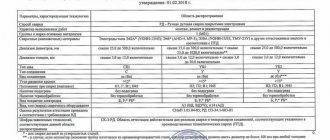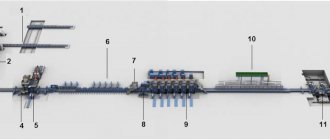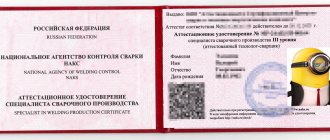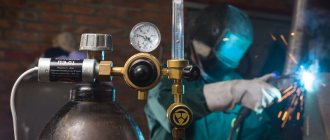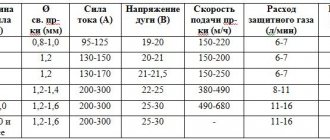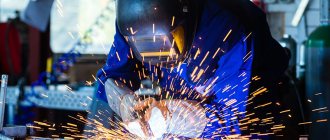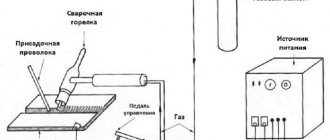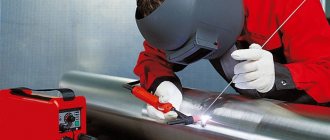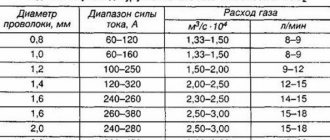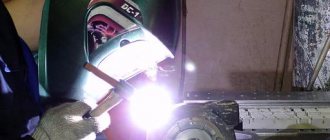The history of the development of welding goes back to our era. Ever since people learned how to mine metal, they have strived to create something useful from it. The most reliable connection method is the hot method. Now it is difficult to imagine that two centuries ago Russian scientists stood at the origins of modern welding machines.
Since then, a new page in the life of humanity began. Now there are several types of welding technologies used in production and at home. The modern history of welding is the invention of new units, methods of joining metals, and personal protective equipment of a new generation. But the traditional arc method using molten and refractory electrodes remains popular. Welders create huge metal structures and miniature works of art.
The role of welding in the modern world
Laser welding methods are currently being developed. A technology for high-precision metal joining has been developed. New composite materials are appearing; the use of aluminum, stainless steels, and non-ferrous metals is widespread. The following types of high-temperature metal compounds are widely used:
- argon-arc technology makes it possible to obtain all types of connections: butt, corner, T-joint, overlap;
- gas, with its help, main pipelines are created that run far from power sources;
- semi-automatic allows you to speed up the process of joining elements, has high accuracy, and reduces the risk of a poor-quality seam;
- Traditional manual electric arc always remains in demand.
Power sources are changing, holders are being improved, but the principle of hot joining of metals does not change. The welding method is preferable to other types of connections due to a number of advantages:
- due to saving metal;
- wear-resistant equipment has a large margin of safety and is used in any conditions;
- compounds are formed at the molecular level with high strength.
First mentions of welding
Long before the advent of welding units, there were other ways to join metal. Samples of compounds created in the 8th – 7th centuries BC have been found. Native gold, pieces of copper and meteorite alloys were used for household purposes and weapons. They were held together by heating using a method comparable to forging.
The stage of the emergence of casting is the next page in the history of welding technology. The gaps between the parts of the metal were filled with melts, creating something like seams. When low-melting metals were discovered, they began to be used to join metals, and soldering arose. Soldering and forging technologies were used before the discovery of the electric arc method, until the end of the 19th century.
Opening the electric arc
Physicist and electrical engineer, academician Vasily Petrov discovered the electric arc effect in 1802. During his experiments, he passed an electric current through a metal and carbon rod and noticed that a bright flash appeared - a high-temperature arc. His works contain a description of this phenomenon. But before the discovery of the welding machine, there were years when electrical engineering was developing. Arc technology required powerful current sources.
Russian inventor Nikolai Benardos developed electric arc welding only 80 years after the discovery of the arc. A new stage in the history of welding development has begun. Nikolai Nikolaevich used an arc for cutting and joining metal elements. A few years later, Nikolai Gavrilovich Slavyanov created the first welding machine and electrodes. He is an official author recognized throughout the world. For the first time, it was he, a Russian engineer, who invented welding and patented it, only then did technologies begin to develop in other countries. Slavyanov actively promoted his method:
- corrected defects that occurred during casting of parts;
- restored parts of steam turbines;
- welded worn parts.
Invention of arc welding
And yet, Nikolai Nikolaevich Benardos is rightfully considered the founder of the arc welding method. The Russian inventor was the first to put forward an idea that later became the basis for this method of metal processing. In 1882, Benardos designed and built a device with which it was possible to qualitatively weld parts in an alternating field and in a gas jet. He used carbon electrodes for arc welding.
Benardos also discovered a method for magnetically controlling an electric arc. Along the way, the inventor developed techniques for effectively using flux and automating the welding process. He also tested the method of resistance spot welding. A number of Benardos' design solutions were patented by him both in Russia and abroad.
Another Russian engineer, Nikolai Gavrilovich Slavyanov, improved the previously developed arc welding method. In fact, he made an independent invention, proposing to use metal rather than carbon electrodes. Slavyanov also built a welding generator and a system that made it possible to regulate the length of the arc. Engineering solutions put into practice by Russian inventors formed the basis of a new welding method, which has not lost its importance in modern production.
Development of technology in modern times
The next stage of history is connected with the Paton surname. My father organized the first welding institute in 1929, under his leadership the technology of welding processes developed. During World War II, new methods were used in the defense industry. New types of fluxes and electrodes for thick-walled products were developed. They were used in the production of military equipment: tanks, guns, bombers and their equipment.
The Kiev Institute developed a method of powder, resistance and slag welding in a liquid and rarefied environment; inert gases were used to protect the seam. The work of Evgeniy Paton was continued by his son, Boris. He headed the welding institute after his father left. Space laser welding technologies were developed under his leadership. Methods of joining metals under water have become more widely used. This technology is used in ship repair docks. The method reduces ship repair time by 1.5 times.
Welding history
Origins. .
The historical development of welding can be traced back to ancient times. The earliest artifacts date back to the Bronze Age. The small gold boxes housed in the Irish National Museum were actually produced by pressure welding, which is known to require no heat and is produced by plastic deformation at room temperature. It is assumed that these boxes were made more than 2 thousand years ago.
During the Iron Age, the Egyptians and the eastern Mediterranean learned to weld pieces of iron together. Many of the tools that have been found were made during the period around 1000 BC.
In the Middle Ages, the art of blacksmithing reached its dawn and many products that appeared at that time were welded by forging, until welding as we know it today was invented in the 19th century.
1800 g
It is believed that acetylene was discovered by the Englishman Edmund Davis. But the first to obtain an arc discharge was another English chemist, one of the founders of electrochemistry, an honorary member of many scientific organizations, including the St. Petersburg Academy of Sciences, Sir Humphry Davy. He received an arc electric discharge between two graphite rods, which were connected to the poles of an electric battery composed of 2 thousand galvanic cells.
Since the mid-19th century, the electric generator has been invented, and lighting using an arc discharge has been gaining popularity. And by the end of the 19th century, gas welding and cutting, arc welding with carbon and steel rods, and electrical resistance welding appeared.
1880
Auguste de Meritan, conducting research in the Cabot laboratory in France in 1881, used the heat of an electric arc to fuse the lead plates of rechargeable batteries. At that time, his student was the young Russian scientist Nikolai Nikolaevich Benardos, who worked with de Meritan in a laboratory in France and became, in fact, the father of welding. The patent for the “Electrohephaestus” electric arc welding method was awarded to Nikolai Benardos and Stanislav Olshevsky. The British patent was issued in 1885 and the American patent in 1887. Bernados also developed the first electrode holder and so on. And although welding with a graphite rod was limited in its capabilities, already in those days it was possible to weld iron and lead. The method began to be widely introduced at the end of 1890 - beginning of 1900.
1890
N.G. Slavyanov presented his version of the idea of metal transfer through an arc (through a steel rod), and also adapted this method for casting into a mold and received a Russian patent for the method of electric steel casting.
At the same time, in 1890, founder C.A. Coffin of Detroit patented in the United States exactly the same process of electric arc welding with a steel rod that was melted by the force of the arc, followed by metal transfer into the weld pool and crystallization of the weld.
1900 g
Around 1900 A.P. Strohmenger, whose name is unknown in the post-Soviet space, introduced in the UK the first steel electrode with a thin coating of clay or lime, which stabilized the arc.
But the electrode with flux coating was invented by the Swede Oscar Kjellberg, who was at the origins of the ESAB company. Work on the creation of coating was carried out from 1907-1914. Piece electrodes were made by drawing and cutting solid metal wire into rods, followed by immersion in solutions of carbonates and silicates. After drying, they were ready for sale.
At the same time, British engineer Elihu Thomson invented resistance welding.
In 1903, the German Goldschmidt (literally “goldsmith”) invented thermite welding, which was used to connect railway rails.
Gas welding and cutting also developed during this time. The production of oxygen, and later the liquefaction of air, along with the invention of the gas burner, contributed to this. Before 1900, attempts were made to weld in an oxygen-hydrogen flame, with the mixture contained in one cylinder. The blowback could lead to a powerful explosion, so the chemist Sainte-Clair Devilleme decided to separate the gases and mix them in a burner. The process became safer, but at the exit St. Clair received a low-temperature torch of 2200 degrees. And only in 1901, the French Edmond Fouche and Charles Picard invented an oxygen-acetylene burner, the drawings and characteristics of which have not changed significantly to this day.
The First World War triggered the militarization of factories and a “golden age” began for welding. Welding machines and electrodes for them began to be mass produced.
1920 - present
In the 20s, different types of welding electrodes were developed, recipes for new fluxing coatings were compiled, and discussions were ongoing on the methodology for their production. The introduction of metal marking required the creation of a classification of coatings and the steel electrode rods used. It was necessary to create more reliable welding seams.
In the 20s, the influence of shielding gases on the welding process was thoroughly studied, since O2 and N2 of air in contact with the liquid metal of the weld caused porosity and hot brittleness. Various gases were supplied to the welding zone, then everything was carefully analyzed.
American chemist Irving Langmuir conducted experimental work with hydrogen as a protective welding atmosphere. He placed two electrodes next to each other, first made of graphite, later made of tungsten. A voltaic arc was ignited between them in a hydrogen atmosphere and active splitting of hydrogen molecules into atoms was observed. The temperature of the dissociated flame was ~ 3700 ° C, which is sufficient for welding, and the high activity of hydrogen provided excellent protection of the weld metal from damage caused by O2 and N2 air. The process is called atomic-hydrogen welding, but is not widely used and is used primarily for tool steels.
Similar work was also carried out by the Americans HM Hobart and PK Devers, only they worked with argon and helium. The result of the empirical research of these gentlemen was a patent for electric arc welding in a gas environment, which can be considered the first step in the creation of a modern inverter argon arc welding machine, which appeared, however, much later. The patented process was ideal for welding Mg, Al, and Cr alloyed steel and was perfected in 1941. The technology was called inert gas tungsten arc welding. Today it is used both in production and at home. ArDS devices are most often used. Among other things, equipment was developed for working in an environment of inert/active gases with a consumable electrode, which is a welding wire passing through a feeder to the burner nozzle along a flexible hose.
1928
In 1928 in the Soviet Union D.A. Dulchevsky invented automatic submerged arc welding. The development of the process began in the late 30s thanks to the efforts of scientists at the Institute of Electric Welding of the Academy of Sciences of the Ukrainian SSR under the leadership of Academician E.O. Paton, which played a big role in tank building, the production of guns and aircraft bombs during the Second World War. Submerged arc welding has found wide application in all sectors of the national economy. This is an effective way to obtain strong seams with good efficiency.
In the USA, the automatic welding process is called “powder submerged arc welding”. It was patented in 1930 by a certain Robinoff, and then sold it to Linde Air Products Company. In 1938, submerged arc welding was actively used in shipyards and ordnance factories.
In 1930, the curious Stud welding process was developed for the New York Navy Yard. Stud was used to secure wooden decking over a metal surface. Stud welding has become in demand in the shipbuilding and construction industries.
In 1949, electroslag welding was born at the Paton Institute in Kyiv, which removed restrictions on the welding of large-sized products. Now you can cook any thickness! The process was presented to the world public at the Brussels World Exhibition in Belgium in 1958
In 1953, K.V. Lyubavsky and N.M. Novozhilov invented a very economical method of welding with a consumable electrode in a CO2 environment. The new method gained worldwide recognition, as it made it possible to work on conventional inert gas welding equipment.
In 1957, the electron beam welding process was discovered by the French Atomic Energy Commissariat and found application in the automotive and aviation industries.
In 1957, Robert F. Gage invented the plasma arc welding process. The temperature in plasma is about 30,000°C, in contrast to an electric arc, the temperature of which is no more than 5000–7000°C.
1960
The use of gas mixtures begins, which consists of adding a small amount of oxygen to an inert gas. In general, the use of mixtures for various steels gives positive results. Pulsed current welding is being introduced.
Soon after the invention of the popular method of semi-automatic welding in carbon dioxide (CO2) by Soviet scientists, it was invented to use a consumable wire electrode with a flux core. When melted, the fluxing powder provided additional gas protection from the inside; carbon dioxide protection was used from the outside. In 1959, a wire electrode was invented that did not require external gas protection. Now it is known as “self-protecting flux-cored wire”; it is most often purchased for cases when it is impossible to use gas. With this wire there is no need to carry a gas cylinder back and forth.
And for a snack...
Friction welding was invented in the Soviet Union. The principle at work here is the conversion of mechanical energy into thermal energy due to the frictional forces that arise when connecting two parts with a certain compression force.
Laser welding is an innovative welding process. The laser was originally developed at Bell Telephone Laboratories as a communications device. But thanks to its ability to concentrate huge amounts of energy in a small volume, it also turned out to be a powerful source of heat, which is used today for highly efficient welding and cutting of metal.
svarka-master.ru
